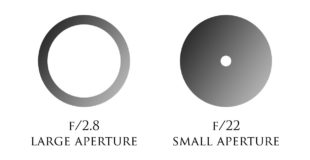Aperture in photography is used to control depth of field in your photos. But it’s also used to control exactly what your viewers look at. Professional landscape photographer Josh Cripps explains aperture in photography and how to use it, with lots of beautiful example photos.
Got questions? Check out my FAQ here:
https://www.professionalphototips.com/frequently-asked-questions/
Subscribe to my newsletter to receive the very best in Nature Photography and Photo Education: http://www.professionalphototips.com/newsletter-signup/
Joshua Cripps is a renowned photographer living near Yosemite National Park in California.
For more landscape photography, tutorials, and workshops visit:
http://instagram.com/JoshuaCrippsPhotography
https://www.facebook.com/JoshuaCrippsPhotography
http://www.SeaToSummitWorkshops.com
—–
All photos, text, and video is copyright Joshua Cripps. Any use without my express written permission is really not cool, man.
Original source

29 responses to “Photography Tutorial: Aperture Made Easy!”
teach me your ways oh mighty senpai..
Very much appreciate this man. Extremely detailed and easy to understand.
I have to think of the size of the part that is blocking the opening.. when the number is bigger the blocked space that you can see is bigger and the field of range is bigger.. and visa versa for smaller number the less I see of it and the less field of vision. I had to make it up in my mind bigger is bigger and smaller is smaller so it didn't confuse me.. lolololol Great Video Mate :))
i am cool
lol, your intros are amazing… tutorials are great too!
I just found your videos today and I can't stop watching!!! I love all the visuals! Thank you so much!
"the most fun you've ever had" ?
your humour + knowledge makes for fun learning!
thanks
when i use a high f like 18 or so it makes it so dark i have to turn the iso or shutter way down. so if im trying to make a sunstar in the woods i cant use a slow shutter cause the brantches will move. any ideas? or is my camera just bad.
Great tutorial, thanks!
A big thumbs UP :))
that was very informative… thanks!!!
is aperture is same in every dslr?
I like your style of explanation. Never get bore.
You have the most watchable tutorials!
This is a great explaination, thanks!
I took a very similar image at Freshfield natural park in Liverpool. It's a b&w but looking back I would of loved a colour copy.
Excellent content man! Just had a quick question, whenever i try shooting at a high f level (f22) it seems as if the shutter speed gets really low. Is this normal? Great video btw. Subscribed 🙂
Best explanation of aperture I've seen… thanks!
"Magic Camera pixies…" ? absolute gold. LMAO.
You're great! Thanks for being clear and authentic 🙂
Beautifully explained!
Hahahaha your videos are hilarious and great, very informative and entertaining, thanks a lot man, keep up the good work! Really appreciate them.
Thanks for solving a big problem for me! I might be captain stupid here but I was confused with all the talk about depth of field that I heard in other tutorials while they were trying to explain aperture. I didn't understand how a photo with low depth of field wasn't completely overexposed since a big amount of light comes it. That's because we have to play around with the shutter speed to compensate! Now I need to understand how to play around with ISO (I guess most people stay under 800) and what at the rules for the combination of shutter/F!
I like to think of the f-stop number as the distance between the edge of the lens and the edge of the diaphragm — it's helped me remember that a small number = a large aperture, and a large number a small aperture 🙂
I love how you explain stuff!! Everyone else makes it so complicated.. the Justin Bieber fan reference though.. ?
Damn and blast those camera Pixies!!! lol
How comes one photo is not darker I am a novice.
I love you :p The way you teach this concepts is pretty awesome!!
This is probably one of the best videos out there explaining aperture. And I've watched many trying to understand it.